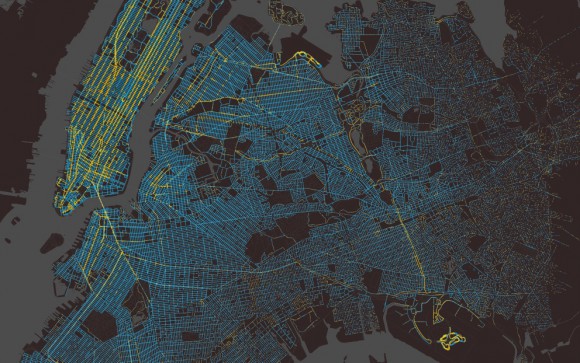Big cities tend to have big pollution problems. But the very source of that bad air — tens of thousands of trips made by crawling, stalling, fuming taxi cabs — could offer city planners a more granular look at the pollution problem. It could even reveal suggestions for fixes, two studies of cab habits in Beijing and New York City suggest.
In Beijing, Microsoft Research scientists analyzed the trips made by 32,000 cabs over two months using GPS data. They calculated how much time and fuel each trip would take.
“Our research allows us to instantly infer the gas consumption and pollution emission of vehicles traveling on a city’s road network,” Yu Zheng, a researcher at Microsoft Research’s Beijing lab and a co-author on the study, told the UN’s Global Pulse blog.
Zheng said he saw the cabs as “mobile sensors” continuously gathering data about the city. Methods like the ones in his study could quickly tell which parts of a city generate the most pollution, thereby helping urban planners to design solutions. Perhaps, he suggested, an analysis tool could suggest routes to taxis so that they were energy efficient. Zheng and his colleagues presented the work at the KDD conference in New York City in August.
Researchers at MIT’s Senseable City Lab and Cornell University revealed the results of a similar analysis last week, looking at New York City cab routes in their work. From 150 million trips by 13,000 NYC cabs tracked by GPS, they showed that almost every ride in New York City could be shared.
The sharing also came with big bonuses—reduced air pollution, less time overall on the road—all at a lower cost for cab riders, and only a possible addition of five minutes to their travel time.








Leave a Reply
You must be logged in to post a comment.